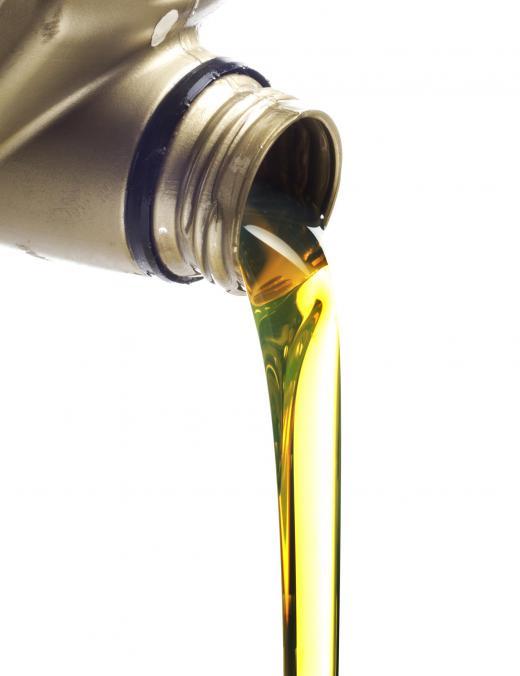What Is the Difference between Dynamic and Kinematic Viscosity?
The viscosity of a liquid is an important physical property that affects the behavior of the liquid as it flows. Highly viscous liquids are more resistant to deformation by stress and flow less easily, while less viscous liquids flow more easily and are less stress-resistant. The two main ways to measure viscosity are in terms of dynamic and kinematic viscosity. These measures are interrelated, but have different applications.
Dynamic viscosity, also called absolute viscosity, is the more commonly used measurement. It measures the resistance of a fluid to flow — in other words, the internal friction of the fluid, or how easily it can deform under mechanical stress at a given temperature and pressure. The technical definition of dynamic viscosity is the ratio of shear stress to velocity gradient. When force is applied perpendicular to the surface of a liquid, it deforms sideways, or shears. The ease or difficulty of this deformation is the dynamic viscosity, sometimes referred to simply as viscosity.

Kinematic viscosity, by contrast, measures the resistance of the liquid to flow in the presence of gravity. This measure is obtained by taking the liquid’s dynamic viscosity and dividing it by the liquid’s density. The higher the viscosity of the liquid, the less easily it will flow under the force of gravity and the higher its kinematic viscosity will be.

Dynamic and kinematic viscosity are expressed in different units of measurement. The International System of Units (SI) measurement units for dynamic viscosity are pascal-seconds. Pascals are a measurement of pressure — in this case, the shear stress applied to the liquid — while seconds measure the time it takes to deform. Dynamic viscosity can also be measured with a unit called the poise, another measure relating pressure versus time. The common unit used to measure kinematic viscosity is the stokes, or square centimeters per second, although sometimes the SI unit of square meters per second is used.
The use of these measurements is essential for various real-world applications. For example, it is important to formulate paint with a certain dynamic viscosity to ensure that it can be mixed and applied in the correct thickness. The measurement of kinematic viscosity is used more often in cases where a fluid must flow through a pipe or lubricate machinery, as in a car engine.
Products such as motor oil that are subjected to varying physical conditions must have a specific dynamic and kinematic viscosity to behave correctly. The viscosity of fluids changes based on temperature and pressure. For example, in cold weather oil thickens and becomes denser, causing it to flow less easily. It is important to know both the dynamic and kinematic viscosity ratios in this situation to predict how the oil will behave at different temperatures.
AS FEATURED ON:
AS FEATURED ON:












Discussion Comments
Motor oils today are usually a blended multi-use product, meaning that they are designed to lubricate an engine under a wide variety of temperatures and weather conditions. Most newer cars are now using 5W-30 grade oil, which translates to easier starting in cold (5W) and good protection for distance driving when at the proper temperature (30). For older cars, a 10W-30 or 10W-40 is recommended. The higher numbers translate to better protection on worn or aging engine parts. For the best choice of oil, speak to a service technician or consult the vehicle's owners manual.
What is the best oil to use in cold weather?
Post your comments